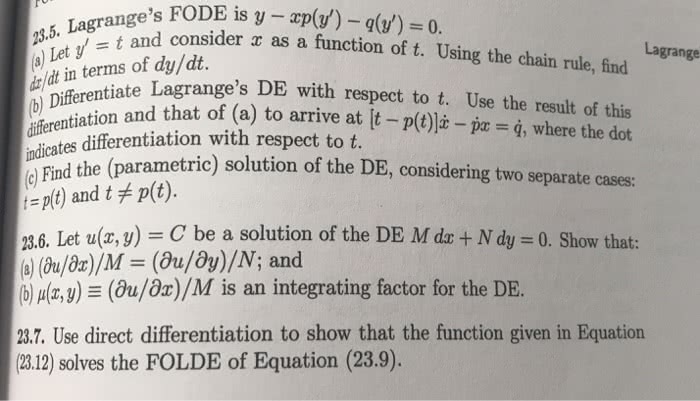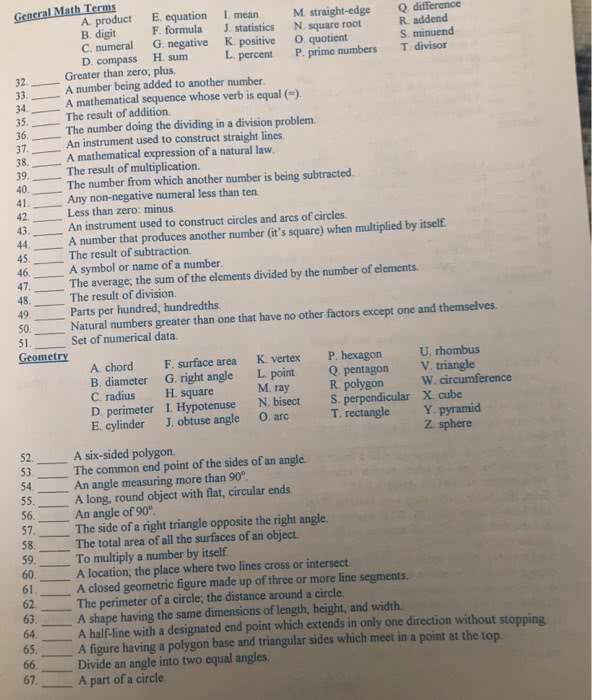MAT 22B Chapter Notes - Chapter 1-7.5: Integrating Factor, Partial Derivative, Product Rule

To solve a separable DE:
• Cross multiply or divide until the equations have their variables and dy or dx on their respective
sides
• Integrate, don't forget the +C
o This is the general solution
• Given an initial condition, we can solve for C and then plug that in for the particular solution
Uniqueness and existence 2.8
To solve an exact non separable DE:
• Rewrite the equation as
o M + Ny'=0
o Find out if M and N ae eual, if so…
• x=M and y=N
• Integrate x wrt x to get don’t foget to add h
• Take the partial derivative, y
▪ Set equal to N to solve for h'(y)
• Plug this back into x,y) and set equal to C
▪ This is the general solution
▪ Find C given an initial condition for a particular solution
o If not equal than not an exact equation and an integrating factor is needed
To solve with an integrating factor:
• At this point we know My and Nx are NOT equal
• Multiply every factor of the original DE by t or xdepending on whether it contains dy/dx or
dy/dt
• Find y of M*tAnd t of N*t
o Note that y of M*ttreats tas a constant since the partial derivative is wrt to y
not t
o Note that t of N*t will involve a product rule that includes 't
• Solve for t, at this point, the equation should now be separable, integrate and solve for t
• Go back and plug this into the equation that was multiplied by t
• Confirm that My and Nx are now equal and solve as an exact non-separable DE
Transforms / shifting
Successive approximations
To solve a homogenous DE:
• We can make a variable substitution that allows us to turn it into a separable equation
• "homogenous" means we can rewrite dy/dx = f(x,y) algebraically to be dy/dx = F(y/x)
o Then we can use a variable substitution that makes it separable
• Let v = y/x (same as y = xv)
o dy/dx = x(dv/dx) + v(1)
• We now have enough to make several substitutions
find more resources at oneclass.com
find more resources at oneclass.com
Document Summary
To solve a separable de: cross multiply or divide until the equations have their variables and dy or dx on their respective sides. Integrate, don"t forget the +c: this is the general solution, given an initial condition, we can solve for c and then plug that in for the particular solution. To solve an exact non separable de: rewrite the equation as, m + ny"=0, find out if m(cid:455) and n(cid:454) a(cid:396)e e(cid:395)ual, if so , x=m and y=n, take the partial derivative, y. Integrate x wrt x to get don"t fo(cid:396)get to add h(cid:894)(cid:455)(cid:895) Set equal to n to solve for h"(y: plug this back into x,y) and set equal to c, this is the general solution. Find c given an initial condition for a particular solution. If not equal than not an exact equation and an integrating factor is needed.



